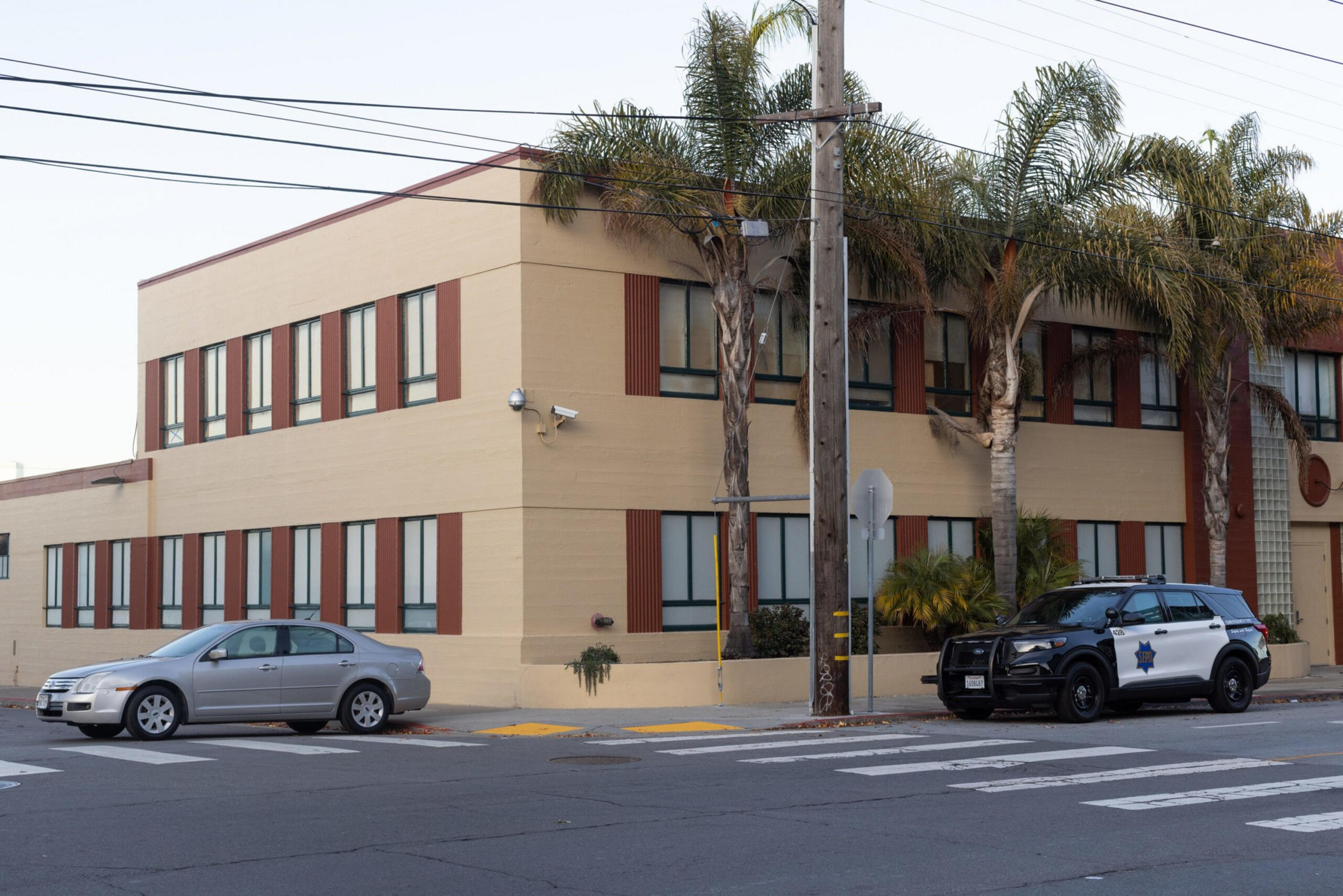In a drab building flanked by police vans in Potrero Hill, there’s a windowless room where a handful of officers sit among empty desks and computer screens. A wall of televisions play the news. Military flags hang from the ceiling. Phone numbers are scrawled on a whiteboard. Without stepping outside, it’s hard to tell if it’s day or night.
This is the room police brass use to rid themselves of problem cops while bypassing the difficult process of removing sworn officers. These are people with years of training and experience investigating crimes, and chasing down dangerous suspects. Here, though, they’re just a disgruntled clerical pool.
It’s called the Department Operations Center, where San Francisco police officers field phone calls, email bulletins and run a database of missing and stolen vehicles instead of patrolling the streets.
The dress code can skew surprisingly casual for law enforcement. Officers have been known to report for duty at the Operations Center in shorts and flip flops. Uniforms aren’t required. For some, they’re not even allowed.
That’s because the Operations Center is a de facto holding facility for cops deemed unfit to don a badge, gun or police blues.
Many officers here are in limbo because state law makes it hard and time-consuming for the department to enforce its own rules. The result? Officers can spend years earning top dollar for work that they say doesn’t require much law enforcement training—while SFPD brass says the department is short more than 500 officers.
“We’re paying a whole lot more money for cops to be sitting there,” said Barbara Attard, a police accountability consultant who previously worked as an investigator for San Francisco’s police watchdog agency. “Let’s get the cops out of the rubber room and onto the street, or let them go.”
Insiders describe Operations Center duty as being “put on ice.”
It’s the San Francisco Police Department’s version of a rubber room (opens in new tab), a place The Standard is exploring in a series of stories rolling out this week. The first one, published Monday, focuses on an officer who spent more than six years getting paid to work at the unit after a teenager at the center of a Bay Area scandal accused him of having sex with her in a car and using drugs.
Some officers in the room are still under investigation and hope to be cleared. Others already know the chief wants to fire or suspend them, so they just bide their time. They wait as their cases wind through a complicated system that’s supposed to hold officers accountable.
They work side-by-side with a mix of civilians and injured officers.
Police brass sent as many as 57 officers to the room between 2016 and late 2022, costing SFPD an estimated $17 million in salaries and benefits. These officers were all transferred by “chief’s order,” which can often but not always mean they got into some sort of trouble.

In a recent month, officers like this made up well over half of the 25 officers in the unit. Another 10 police services aides, or uniformed civilians, staffed the unit during the same timeframe.
Grouping troubled cops in a drab room for work a lot less challenging than they might be used to doesn’t exactly make for a happy place, as officers with firsthand knowledge can attest.
Some get bitter. They swap stories about why they believe they were wronged. Others keep to themselves.
“It’s toxic. You’re trying to be positive. But at the end of the day, you’re like, ‘I don’t want to be here,’” said former police sergeant Darius Jones, who spent 10 months at the Operations Center before being fired. “You’re sitting in a cesspool of people who are just, you know, we’re all wallowing.”
Sometimes it’s obvious to those on the inside why an officer got sent to the Operations Center, because their case already played out in the headlines.
The reason may vary, but getting sent there at all brings a stigma.
SFPD says it sends cops to the Operations Center for a variety of reasons that don’t necessarily involve discipline—like an officer’s skills, for example.
But that doesn’t explain why so many end up there after getting in trouble.
This story is the second in a series exploring the shadow system for holding officers accountable at the San Francisco Police Department. Click here for Part I.
